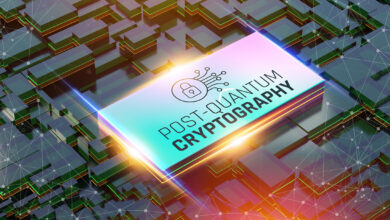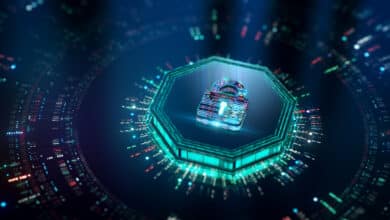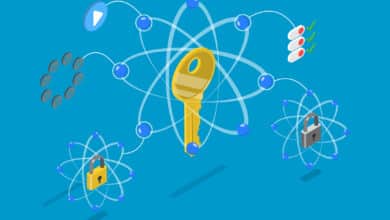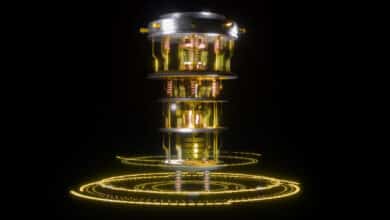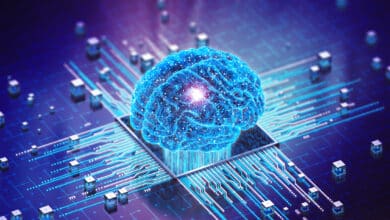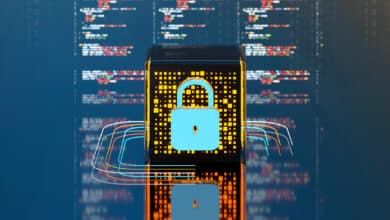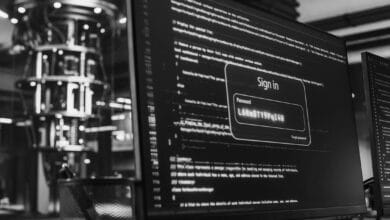Post-Quantum, PQC, Quantum Security
PostQuantum.com – Industry news and blog on Quantum Computing, Quantum Security, PQC, Post-Quantum, AI Security
-
Post-Quantum Cryptography (PQC) Standardization – 2025 Update
Post-quantum cryptography (PQC) is here - not in theory, but in practice. We have concrete algorithms, with standards guiding their implementation. They will replace our decades-old cryptographic infrastructure piece by piece over the next decade. For tech professionals, now is the time to get comfortable with lattices and new key…
Read More » -
NIST PQC Security Strength Categories (1–5) Explained
As part of its post-quantum cryptography (PQC) standardization, NIST introduced five security strength categories (often labeled Levels 1-5) to classify the robustness of candidate algorithms. Each category represents a minimum security level that a PQC algorithm’s cryptanalysis should require, defined by comparison to a well-understood "reference" problem in classical cryptography.…
Read More » -
PQC Is Necessary, But Not Sufficient – Building Quantum Resilience the Right Way
Simply "dropping in" PQC algorithms will not magically make systems quantum-safe. Real security hinges on how these new primitives are implemented, integrated, and layered into our systems. A quantum-resistant algorithm on paper can still fail in practice due to coding bugs, side-channel leaks, protocol limitations, or misuse within a larger…
Read More » -
Quantum Readiness: What Crypto Exchanges Should Do Today
Preparing for quantum computing is a grand challenge, but it’s one that crypto exchanges can tackle step by step. By addressing off-chain vulnerabilities, fortifying custodial key management, and staying vigilant on-chain, exchanges can dramatically reduce the risk of being caught off-guard by a quantum breakthrough. The goal is not to…
Read More » -
Physics at the Heart of the New Cold War
In the 21st century, cutting-edge physics has moved from the laboratory into the realm of high geopolitics. Breakthroughs in quantum computing, advanced materials, and energy aren’t just academic - they are strategic assets coveted by nations. The situation echoes the mid-20th century, when projects like the Manhattan Project turned abstract…
Read More » -
Hybrid Cryptography for the Post-Quantum Era
By combining classical and post-quantum cryptographic primitives in tandem, hybrid schemes provide defense-in-depth during this transition period. In practice, a hybrid approach might mean performing both a traditional elliptic-curve key exchange and a post-quantum key exchange inside the same protocol, or signing a document with both an ECDSA signature and…
Read More » -
Quantum Key Distribution (QKD) 101: A Guide for Cybersecurity Professionals
Quantum Key Distribution (QKD) is a cutting-edge security technology that leverages quantum physics to enable two parties to share secret encryption keys with unprecedented security guarantees. Unlike classical key exchange methods whose security rests on computational assumptions, QKD’s security is rooted in the laws of physics – any eavesdropping attempt…
Read More » -
From NISQ to FTQC to FASQ
The dream of quantum computing is inching closer to reality, but between our current noisy prototypes and tomorrow’s transformative machines lies a daunting gulf. In the language of the field, we are transitioning from the NISQ era into the realm of FTQC, with an eye on the ultimate prize dubbed…
Read More » -
Adiabatic Quantum (AQC) and Cyber (2024 Update)
Adiabatic Quantum Computing (AQC) is an alternative paradigm that uses an analog process based on the quantum adiabatic theorem. Instead of discrete gate operations, AQC involves slowly evolving a quantum system’s Hamiltonian such that it remains in its lowest-energy (ground) state, effectively “computing” the solution as the system’s final state.…
Read More » -
Quantum Hacking: Cybersecurity of Quantum Systems
While these machines are not yet widespread, it is never too early to consider their cybersecurity. As quantum computing moves into cloud platforms and multi-user environments, attackers will undoubtedly seek ways to exploit them.
Read More » -
Quantum Ethics: Why We Must Plan for a Responsible Quantum Future
New technologies bring not only breakthroughs but also new risks and dilemmas - and quantum computing is no exception. Quantum computers promise to solve problems beyond the reach of classical machines, from cracking complex optimization puzzles to simulating new drugs and materials. Yet experts warn that quantum’s “known unknowns” include…
Read More » -
Post-Quantum Cryptography (PQC) Meets Quantum AI (QAI)
Post-Quantum Cryptography (PQC) and Quantum Artificial Intelligence (QAI) are converging fields at the forefront of cybersecurity. PQC aims to develop cryptographic algorithms that can withstand attacks by quantum computers, while QAI explores the use of quantum computing and AI to both break and bolster cryptographic systems.
Read More » -
Data Discovery & Classification: Foundations for Quantum Readiness
Every CISO knows the old adage: “You can’t protect what you don’t know you have.” In the quantum readiness era, this doesn’t just apply to hardware and software assets - it applies equally to data. As organizations brace for cryptography-breaking quantum computers, they must first discover and classify their data…
Read More » -
Cryptographic Bill of Materials (CBOM) Deep-Dive
Cryptographic Bill of Materials (CBOM) represent the next evolution in software transparency and security risk management. As we have explored, a CBOM provides deep visibility into an application’s cryptographic underpinnings – an area that has often been opaque to security teams. By enumerating algorithms, keys, certificates, and their usage, CBOMs…
Read More » -
Capability E.1: Engineering Scale & Manufacturability
Building a cryptography-breaking quantum computer (often dubbed Q-Day) will demand far more than just better algorithms or a few more qubits. It requires a massive scale-up in engineering - reaching hundreds of thousands or even millions of physical qubits - and doing so in a practical, manufacturable way. Engineering Scale…
Read More »
